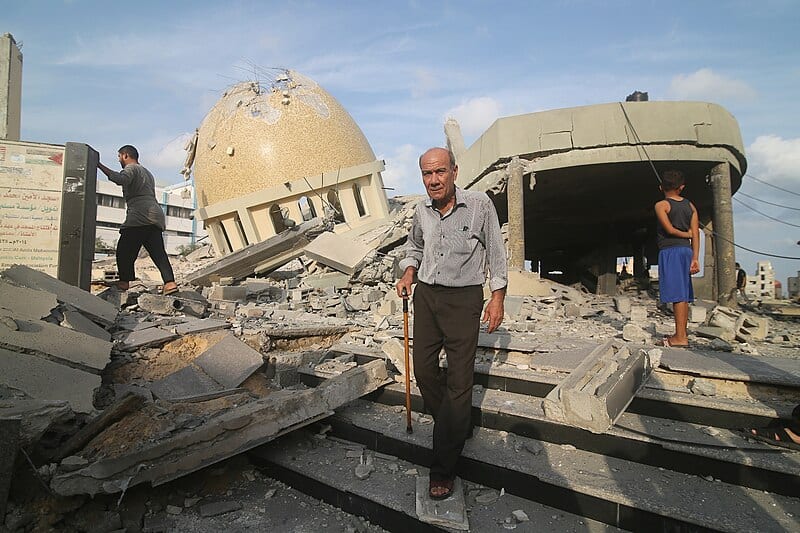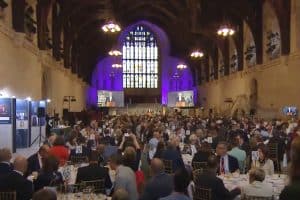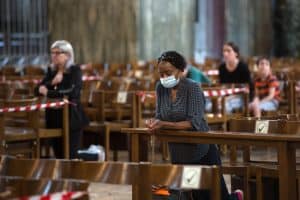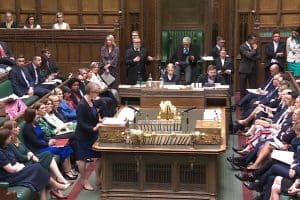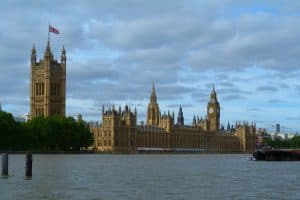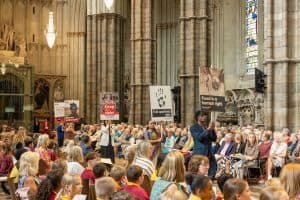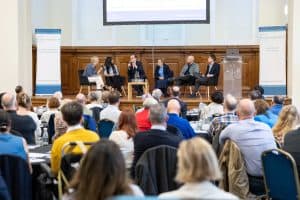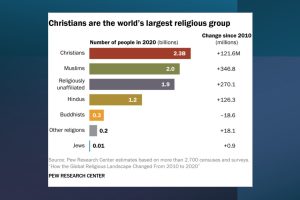By Liz Harris
Gaza is in the grip of a humanitarian catastrophe. But how has the war affected the religious life of Muslims and Christians in the area?
Water shortages and wudu
Gaza is running dry. Water shortages have been rife in the strip for decades, but since the war began after the Hamas attack on 7 October, the situation has become critical. The World Health Organisation states the minimum amount of water a person needs a day in an emergency is 15 litres. Gazans are surviving on three or less.
Hashim holds up a squeezy bottle filled with water to his three children. It looks like it once held washing-up liquid and holds about a litre of water.
“My grandfather used a container which held 1½ litres of water, which lasted him the whole day for wudu and washing his hands after eating. So, I am going to show you how this bottle will last me for four wudu a day,” he tells them in a video he sent from Khan Younis to his cousin Maha, 42, on 19 October.
Wudu is the Arabic name for the ablution Muslims perform before prayer, as laid out in the Quran. It’s an essential ritual, carried out by millions every day. “In Islam, water is crucial for physical and spiritual purification,” the British Islamic scholar Shafiur Rahman, 52, tells me.
Hashim is staying in a house with about 100 other displaced people, and the pressure on sanitary facilities is extreme. Tap water, unsafe to drink in normal times, stopped running altogether for 12 days in early December.
A plane buzzes overhead as Hashim squirts water onto his hands and rubs them together. He washes his mouth out and spits, then splashes water into each nostril and snorts. Then he cleans his eyes and face.
Next come his arms — the right first — and then his head from back to front and his ears. Finally, he washes his feet.
He holds up the bottle again. He’s used no more than three inches of water to clean his body. “You see?” he says to the children, over the buzzing from the sky.
Funerals
“A proper funeral is now a luxury in Gaza,” says Ahmed Najar, 42, a London-based Palestinian originally from the Jabalia refugee camp in north Gaza.
Every day the death toll jumps up by tens or hundreds according to the Hamas Ministry of Health. With the cemeteries full, bodies are buried in mass graves without ceremony.
His 91-year-old grandmother had Alzheimer’s and was unable walk.
“She lived with my uncle,” he tells me. “But when the IDF [Israel Defence Forces] came to the house, they ordered him out at gunpoint, and she was left behind because they couldn’t move her. Three days later, my uncle returned and found her dead. She had been shot in the chest and the leg.”
The horror of his grandmother’s death was compounded by her burial. “My uncle buried her somewhere — I don’t know where. She wasn’t washed because there was no water, and she wasn’t prayed for.”
Shafiur Rahman tells me: “Funeral rites are laid out in the sayings of the Prophet Muhammad, known as hadith. Burials should take place as soon as possible, preferably on the same day.
“In normal times, family and friends gather together to view the body. It’s a time to say goodbye and comfort one another. The body is then washed and wrapped in a shroud; ideally, three layers of cloth for men and five for women. Prayers are said over the deceased, who is then taken to the graveyard for burial. Graves are marked with a headstone.”
But since the war began, Ahmed Najar tells me: “There have been no proper burials. People are burying their dead wherever they can — in the garden or in mass graves.” The acute water shortages mean there is not enough water to wash the dead.
He says Gazans are even considering cremation, although it is forbidden (haram) in Islam, because at least six cemeteries have been damaged or destroyed by Israeli ground forces according to The New York Times. There are also unconfirmed reports that bodies buried in a mass grave at the Kamal Adwan hospital were dug up by the IDF’s bulldozers in early December.
The Israeli Defence Forces did not answer my question about the Kamal Adwan hospital. Ahmed Najar did not wish me to seek verification from them about his grandmother’s death because he fears retaliation against his family in Gaza.
But thousands of miles away in London, thoughts of her weigh heavily on him. “This has been most distressing for me. I can’t sleep for nightmares.”
Places of worship targeted
Dozens of mosques and churches have been hit by missiles since the assault on Gaza began, according to the Geneva-based Euro-Med Human Rights Monitor.
In November, it said 66 mosques had been destroyed and 146 damaged, which accounts for 20 per cent of all mosques in Gaza.
“A mosque is more than a place of worship for Muslims,” Shafiur Rahman says. “It’s a community hub — a place where you go to socialise, for tranquillity, or to speak with an imam for advice. When the Prophet Muhammad went from Mecca to Medina with his followers, the first thing he did was to build a mosque.”
People having been worshipping on the site of the Great Omari Mosque in Gaza City for at least 1,600 years. Originally a fifth-century Byzantine church built over an ancient temple, it was converted into a mosque in the seventh century and back into a church by the Crusaders 400 years later. In 13th century, it became the Great Omari Mosque. Now its minaret is surrounded by rubble after being bombed for the second time since the war began.
Three historic churches have also been bombed, including the Church of St Porphyrius in Gaza City. The Orthodox Patriarchate of Jerusalem told Al Jazeera that 18 people — including several children — were killed as they sheltered there. Meanwhile the Holy Family Church, the only Catholic church in the Gaza Strip, has come under fire. The besieged congregation include members of British MP Layla Moran’s extended family.
Ahmed Najar is horrified at the bombing of St Porphyrius. “As children we went on school trips to churches. We’d watch the bells being rung – it was part of our childhood. It’s horrible to see them destroyed, like losing someone.”
He tells me that the Muslim and Christian communities are intertwined and have always lived together harmoniously. Muslim Palestinians baptise their children and Christians use the same names as Muslims.
As testament to this relationship, the Palestinian Arab Orthodox Priest Antonius Hanana announced on social media on 13 December that: “If the mosques are bombed and there is no muezzin and I am present in Gaza, I will raise the call to prayer … on behalf of my Muslim brothers.”
Shireen Allan, president of the International Council on Monuments and Sites in Palestine, said: “During the war, these religious centres provided services to displaced people, providing free shelter and food and water. It seems that the insistence on destroying the heritage and non-heritage, religious and non-religious buildings in Gaza aims to disassemble institutions in all fields of life in Gaza Strip.
“The intentional and deliberate destruction of infrastructure will be at a high cost to recovery, and there are destructions that cannot be restored … What is being done is a cultural genocide”.

